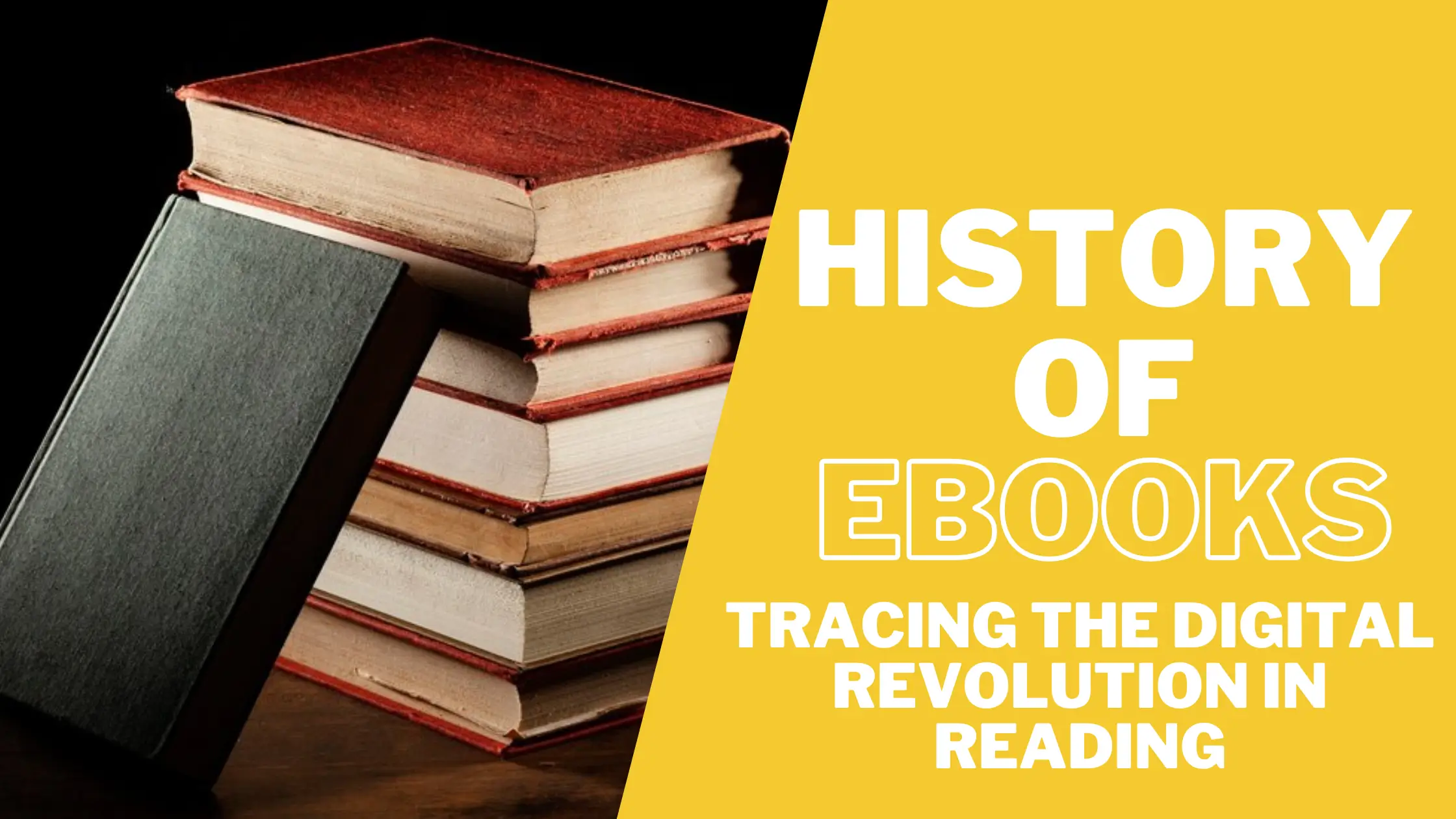The evolution of ebooks marks a significant chapter in the history of ebooks reading and publishing, transforming the way information is produced, distributed, and consumed. The concept of an electronic book dates back to the 1930s; however, it wasn’t until the late 20th century that the technology caught up with the vision. Today, ebooks are recognized for their convenience and accessibility, making a vast repository of literature and text-based information available at the touch of a finger. They are compatible with a variety of electronic devices, including eReaders, tablets, and smartphones, providing a digital solution to the age-old tradition of reading.
The rapid adoption of ebooks began in earnest at the turn of the millennium. Innovations in electronic paper display technology, along with the development of portable reading devices, catalyzed a shift from physical to digital books. While the initial iterations of ebooks focused predominantly on replicating the experience of reading a traditional book, the format has since expanded to include interactive elements such as hyperlinks, multimedia, and adjustable text, enhancing the reading experience and offering functionalities beyond those of printed texts.
Ebooks have significantly impacted the publishing industry, allowing for quicker and wider distribution of works and offering authors the possibility of self-publishing without the need for a traditional publisher. The history of ebooks is not just a technical chronology but also a tale of how innovation can influence culture and habits, changing the way people learn, enjoy literature, and access information.
Origins of the Ebook
The ebook’s journey began long before modern digital devices came along. Its history traces back to early attempts to digitize texts and the technological breakthroughs that paved the way for the various types of ebooks we know today.
Project Gutenberg and Early Initiatives
Project Gutenberg stands as a trailblazing initiative in the history of digital books. Launched in 1971 by Michael Hart, it aimed to create the first collection of free electronic books. Hart’s first digitized work, the United States Declaration of Independence, was painstakingly typed into a computer and made available for download, laying the foundation for future ebook collections. Project Gutenberg’s mission to “break down the bars of ignorance and illiteracy” has since seen the creation of a vast library of over 60,000 public domain texts, accessible to anyone with an internet connection.
Early ebook devices, however, greatly differed from today’s sleek tablets and readers. They were often cumbersome and offered a user experience far from ideal. Nevertheless, these initial endeavours formed the backbone for the next steps in the literary digital revolution.
Development of E-ink Technology
The arrival of E-ink technology marked a significant leap in ebook history. Developed in the late 1990s, E-ink, short for electronic ink, mimics the appearance of actual ink on paper. It significantly eases the experience of reading on digital devices by offering a glare-free, paper-like display that is less straining on the eyes. Unlike the backlit screens of computers or tablets, E-ink screens reflect light like paper, making it possible to read even in bright sunlight.
Sony’s Librie, released in 2004, was the first to employ this technology in a commercially available product. However, it was the Amazon Kindle launch in 2007, with its E-ink display, that truly popularized the format. This marked a turning point, as readers around the world began to see ebooks as a viable alternative to traditional printed books.
Rise of E-Reader Devices

The transition from traditional paper books to digital reading catalyzed the development of e-reader devices, providing a platform dedicated to electronic book consumption.
First Generation E-Readers
The history of e-readers can be traced back to the early inventions that paved the way for digital reading. One of the most notable devices is the Sony Data Discman, released in 1992, that allowed users to read books stored on CDs. Following that, the first commercially successful dedicated e-reader, the Sony Librie, emerged in 2004 and utilized E Ink technology to provide a paper-like reading experience. These early devices marked the initial step towards the dedicated electronic reading platforms that exist today.
Mainstream Adoption and Market Growth
The e-reader market rapidly expanded with the launch of Amazon’s Kindle in 2007, which became widely popular for its convenience, portability, and E Ink display that emulated the look of printed paper. The Kindle’s success spurred other companies to release their own devices, such as the Barnes & Noble Nook and the Kobo eReader. With the improvement of technology and a growing e-book library, the consumer base grew, solidifying the role of e-readers in the digital reading revolution and the subsequent decline in print book sales.
Ebook Formats and Standards
In the realm of digital reading, the formats and standards of ebooks are vital for compatibility and access across various devices and platforms. These conventions dictate how ebooks are structured, displayed, and secured.
PDF and Plain Text
Portable Document Format (PDF) and plain text files are among the earliest and most straightforward ebook formats. PDFs preserve a book’s original layout and design, making them ideal for a wide range of documents, including those with complex graphics. On the other hand, plain text files are highly compatible across different devices due to their simplicity, although they lack the ability to support images or advanced formatting.
EPUB and MOBI
EPUB, which stands for Electronic Publication, is a widely accepted open ebook standard, fostering greater interoperability between software and hardware for ebooks. It is designed to be reflowable, allowing text to adjust to various screen sizes. Conversely, MOBI is a proprietary ebook format initially used by the MobiPocket Reader, and though less versatile than EPUB, it is still quite popular on Amazon Kindle devices.
DRM and Format Wars
Digital Rights Management (DRM) has been at the center of the so-called ‘format wars’ within the ebook industry. DRM technology imposes restrictions on the use, modification, and distribution of ebooks to protect copyright holders. However, it also presents challenges concerning consumer rights and fair use, limiting the ability to transfer legally purchased ebooks between different devices and platforms.
Ebooks in the Publishing Industry

The evolution of ebooks has significantly altered the landscape of the publishing industry, with ramifications for traditional publishers, self-publishing authors, and the management of digital rights.
Impact on Traditional Publishing
Ebooks have disrupted the traditional publishing model by providing readers with instant access to a wide range of titles at often lower prices. A landmark moment was when Amazon reported selling more ebooks than print books for the first time in 2011. Traditional publishers have had to adapt to this shift, facing challenges in areas such as pricing, distribution, and competition with self-published ebooks.
Self-Publishing and Ebooks
The rise of ebooks has democratised content publication, allowing authors to bypass traditional publishers altogether. Platforms like Amazon’s Kindle Direct Publishing have empowered authors by offering tools to directly publish and market their ebooks. This has led to an explosion in the quantity of available content, with self-published works becoming a substantial part of the industry. Authors now enjoy more control over their work, royalties, and marketing strategies.
Digital Rights Management (DRM)
Digital Rights Management (DRM) has emerged as a critical tool to prevent unauthorized copying and distribution of ebooks. Publishers and platforms enforce DRM to protect the intellectual property of authors and maintain revenue. However, DRM also imposes restrictions on users, which can affect ebook usability and sharing. This tension reflects an ongoing debate in the industry regarding the balance between security and user freedom.
Future Trends in Ebook Technology
As the ebook market evolves, technological trends are shaping a new future. This section explores how readability enhancements, interactive elements, and educational applications are driving this evolution.
Advancements in Readability
Devices and software are now offering more customizable reading experiences to cater to individual preferences and needs. High-resolution screens that mimic paper are becoming prevalent, reducing eye strain and improving the comfort of reading for longer periods. Font type and size customization, as well as adaptive lighting technologies, are also becoming standard features to enhance readability in various environments.
Interactive and Multimedia Ebooks
Ebooks are no longer static pages of text. Innovations are leading to the incorporation of multimedia elements such as audio, video, and interactive graphics, which are enriching the reading experience. This allows authors to create dynamic content that can respond to reader inputs and provide a more engaging experience, significantly transforming storytelling.
Ebooks and Education
Educational ebooks are increasingly leveraging interactive tools to better engage students and facilitate learning. Digital textbooks now often include assessments, animations, and experiential digital reading features. These tools provide immediate feedback, allow for personalized learning paths, and can adapt to the student’s pace and learning style, making education more responsive and effective.
FAQ's
The first e-book is recognized as the United States Declaration of Independence, digitized by Michael Hart in 1971, marking the inception of what would evolve into Project Gutenberg.
Ebook readers began as simple text-display devices, evolving over time into sophisticated gadgets. They gained features such as e-ink displays, touch screen interfaces, and wireless connectivity, significantly improving the reading experience.
The rise of ebooks can be attributed to the convenience of portable digital libraries, the advent of affordable reading devices, and the growth of online marketplaces, providing easy access to a vast selection of titles.
Ebooks have introduced significant changes in traditional publishing, creating new opportunities for self-publishing, changing revenue models, and leading to a shift in consumption patterns among readers.
Significant milestones include the development of the first eReader by Sony in 2004 and the launch of Amazon’s Kindle in 2007, which greatly accelerated the global adoption of ebooks. Advances in e-ink technology and the introduction of smartphones and tablets also contributed to their widespread use.
Ebooks offer portability, the ability to store thousands of books in one device, easy accessibility with instant downloads, and features such as search functions and adjustable text size that physical books cannot provide.


